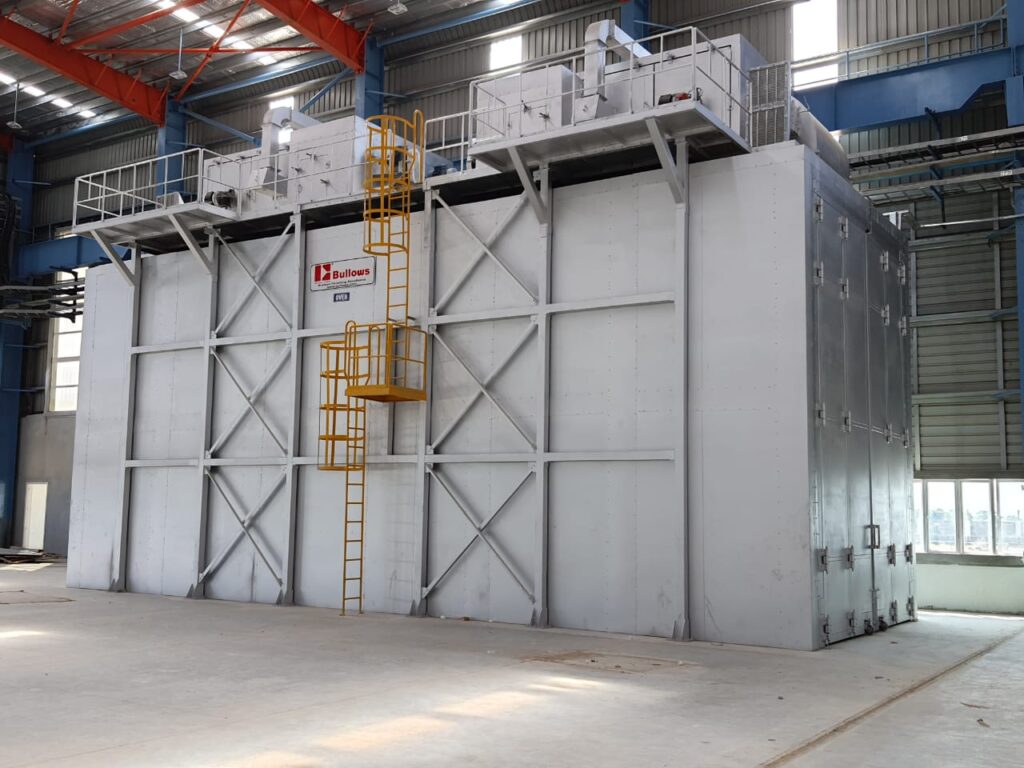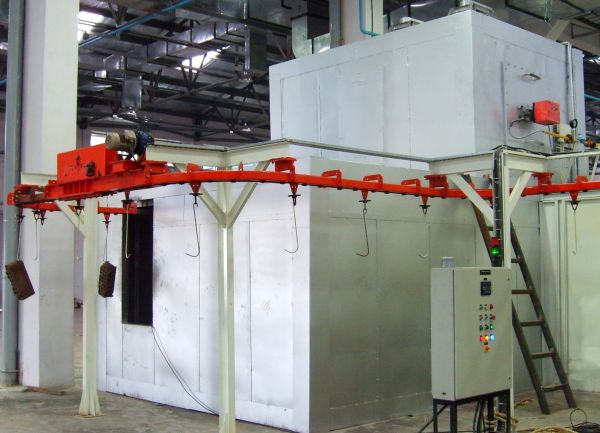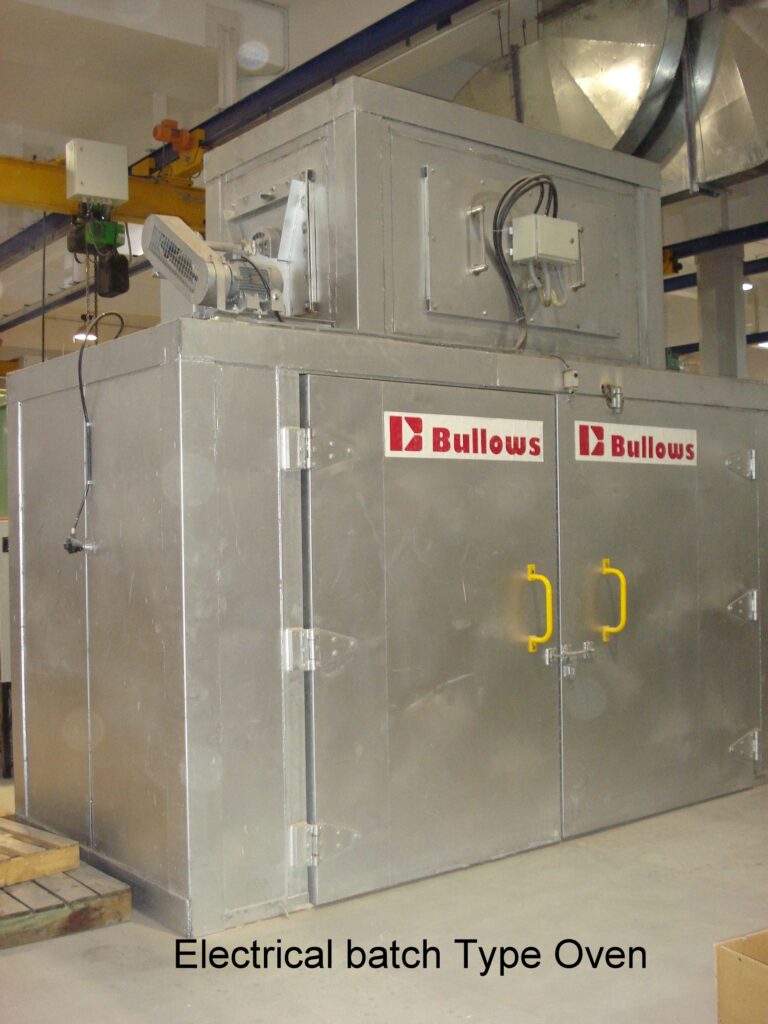
Paint Curing Oven
Bullows has engaged in manufacturing & supplying Paint curing ovens since its inception in 1963 in all Three types of Curing Ovens i.e., Electric fired, gas fired and diesel fire ovens. Bullows cover paint-curing ovens for metal bodies to plastic bodies, small handles to large engines. Bullows also specialises in manufacturing Conveyorized paint-dying ovens where the constant temperature has to match the conveyor’s speed vs time.
Why Industrial Paint Curing Oven required?
The provision of an Industrial Paint Curing Oven in a production shop area ensures:
1] Speeding up the paint-drying
operation
2] Improved quality of product
3] Increase in the durability of the
product
4] Economizing the cost of Painting
the product and lastly
dust-free product.
Criteria of selection of Type Industrial Paint Curing Oven:
the type of an Industrial Paint Curing Oven is determined by many factors, such as
1] Total heating capacity
2] Shape of the object to be dried in the Paint
drying Oven.
3] Type and thickness of insulation required
in the Paint Drying Oven.
4] Adequate exhaust arrangement for
removing the solvent fumes of the Paint
Drying Oven.
5] Proper arrangement for the location of
burners and heaters in the paint-drying
oven to ensure uniform heating.

Conveyorised Oven
It is often used for processes such as drying, curing, or cooking products. The overhead monorail conveyorised oven can be customized to meet the specific needs of each application, including the size, shape, and weight of the products being processed, as well as the temperature and duration of the heating process.
*) Features:
1] Overhead Conveyor System: The conveyor system in an overhead conveyorized oven is mounted overhead, utilizing an overhead track or rail system. This configuration frees up floor space and allows for easy movement of products through the oven.
2] Adjustable Conveyor Speed: The speed of the overhead conveyor system can be adjusted to accommodate different production rates or process requirements. This provides flexibility in the oven’s throughput and processing time.
3] Temperature Control: Overhead conveyorized ovens feature precise temperature control systems to maintain the desired temperature throughout the oven chamber. Temperature sensors and controllers ensure accurate and consistent heating for the products being processed.
4] Uniform Heating: These ovens are designed to provide uniform heat distribution across the entire width and length of the conveyor system. This ensures consistent and even heating of the products, eliminating hot or cold spots.
5] Floor Space Optimization: By positioning the conveyor system overhead, these ovens maximize floor space utilization. This can be beneficial in facilities where floor space is limited or needs to be kept clear for other operations or equipment.

Batch Type Oven
Industrial batch Ovens are used for all sorts of applications in various manufacturing processes. They bake, cure, dry, form and pre-heat across industries including aerospace, automotive, ceramics, foam, pharmaceuticals, plastics, power, and sporting goods.
1] Batch Ovens Are Closed Systems
Batch ovens are, by definition, closed-process machines. The product is loaded into the oven, the doors close, and the heating begins. This makes batch ovens great for applications that require environmental control and isolation, such as inert-atmosphere and clean-room processes.
2] Batch Ovens Can Accommodate Large or Unusually Shaped Parts
When you have a large or unusually shaped part that needs heat treating, chances are a batch oven will be your best bet. Walk-in batch ovens that can accommodate parts as large as — or larger — than a pickup truck can be created. They can also be engineered to work with special product trays or carts to carry parts with odd shapes.
3] Batch Ovens Requires Less Capital Investment and Upkeep
Batch ovens are less expensive to manufacture than continuous ovens. They also require less maintenance. However, batch ovens can be comparatively slow from a production standpoint and incur additional labour costs since they must be manually loaded and unloaded.
